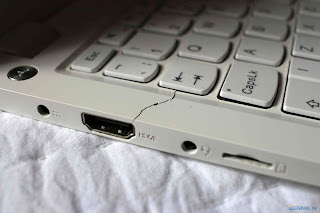Apple MacBook Pro 2018 touch bar keyboard disassembly
The disassembly of this tutorial is not a
laptop, but a component of the notebook: the keyboard.
This model first appeared on the 2015
MacBook, and the butterfly mechanism replaced the scissors connector used for
registration when the button was pressed. It allows Apple to reduce the
thickness of the keyboard by 40%.
However, for many users, the problem
becomes more and more obvious. This new keyboard is susceptible to
contamination. Disassembly experts, including iFixit, have confirmed this fear:
a single dust or sand can get caught in a butterfly-type keyboard, causing
certain related functions to stop or repeat uncontrollably, or disable the
keyboard altogether.
The situation is getting worse. The keyboard is
in a wider design, and other slender elements and glue masses make it difficult
to replace the faulty key. This applies to a faulty laptop being taken to the
Genius Bar or an independent repair shop. Usually, the only solution is to
replace the entire "top" component - laptop, trackpad, battery,
etc.
In June of this year, Apple publicly
acknowledged the problem and extended the warranty period of its sold laptops,
including the Butterfly Keyboard - nine of the high-end MacBook and MacBook
Pro models. Anyone who has been accused of keyboard repairs will receive a refund.
The company also said it has improved the
internal mechanics of its 2018 MacBook Pro keyboard. So, what is the effect?
In the latest 13-inch MacBook Pro, the
iFixit disassembly of the keyboard found that Apple has
made the keycap thinner and therefore easier to remove (1.25mm vs. 1.5mm). The
company has also redesigned the space mechanism because it is particularly
vulnerable.
However, the main progress comes from a
critical moment. Each butterfly is now surrounded by a layer of silicone in the
form of a single die slice between the cap and the joint. In a pending patent,
Apple describes it as "a protective structure attached to a keycap that is
operable to direct contaminants away from the moving mechanism."
When iFixit dig deep into the design of the
new component, it again encountered a lot of glue and rivets: "In addition
to the improved keycap, this keyboard design still lacks maintainability. The
large number of disassembly required makes the replacement failed keyboard
become Very unrealistic.
In a leaked document and related
presentations by internal maintenance staff and official partners, Apple warned
that hardware products running T2 companion chips - the most recent MacBook Pro
and iMac Pros - have not been completed by running official diagnostic tools
Repairs will be made of bricks.
Apple's silicon designers have been
integrating multiple independent components into coprocessors such as T2. T2
includes security features, primarily Secure Enclave, for secure boot and
encrypted storage.
One reason many people buy Apple products
is their durability. What if Apple decides to no longer support these models
within a few years? Or, if the reason does have security issues, does the
company now support T2 machines forever?
Apple can do ring keyboard repairs – Apple doesn't
know if there is a problem with the keyboard. Interestingly, the patent on how
to prevent contaminants from entering the keyboard was submitted three months
before the company officially recognized the keyboard issue.



评论
发表评论